
LEAs and schools should convene a broad range of stakeholders that are interested in and have the capacity to impact change. Stakeholders must conduct a thorough data analysis from all relevant sources, including district wide Early Warning System (EWS) data, to identify the students most at-risk for dropping out of school and not graduating.

The first step in impacting change is to bring a group of internal and external stakeholders together to examine all relevant data to identify strengths, opportunities, and next steps.
Click each image to access resource, presentation or full document.
Recommended Stakeholders Roles and Responsibilities of District and School Team
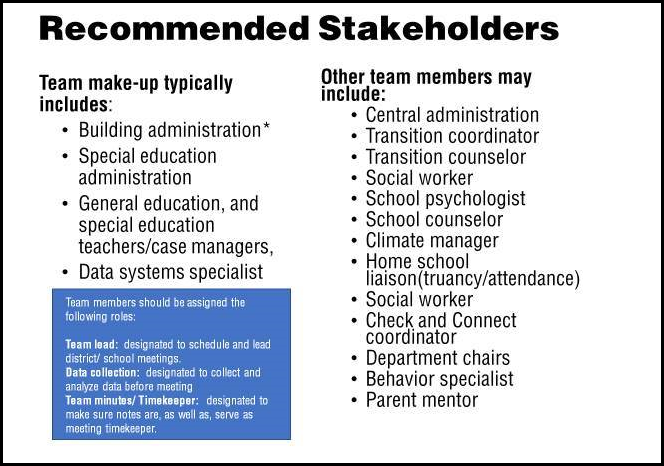
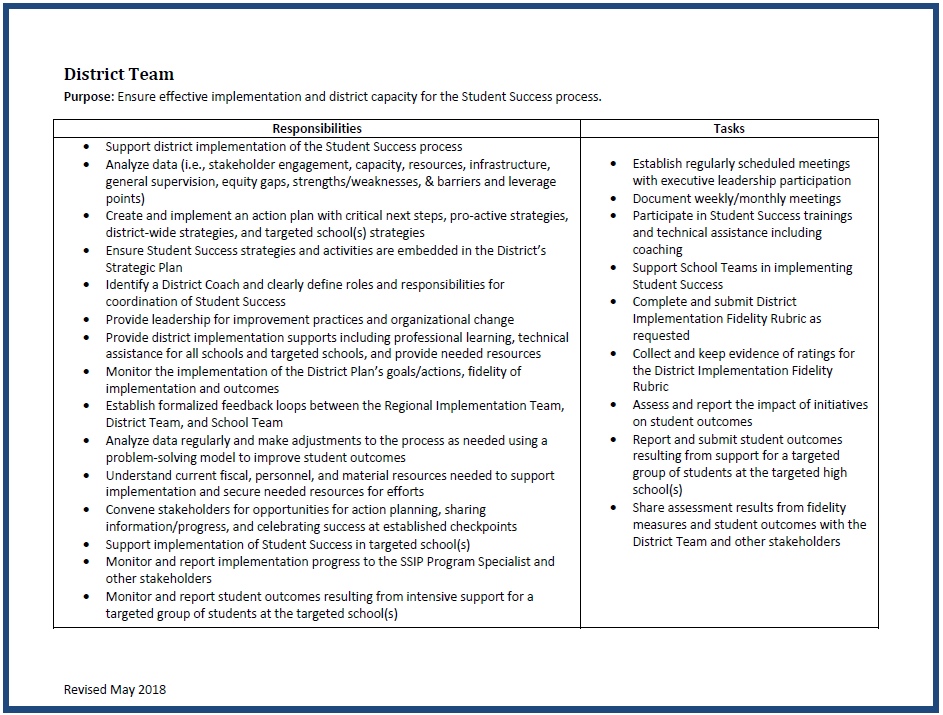
Essential Components of an NCSI Non-Negotiables
Efficient and Effective Meeting
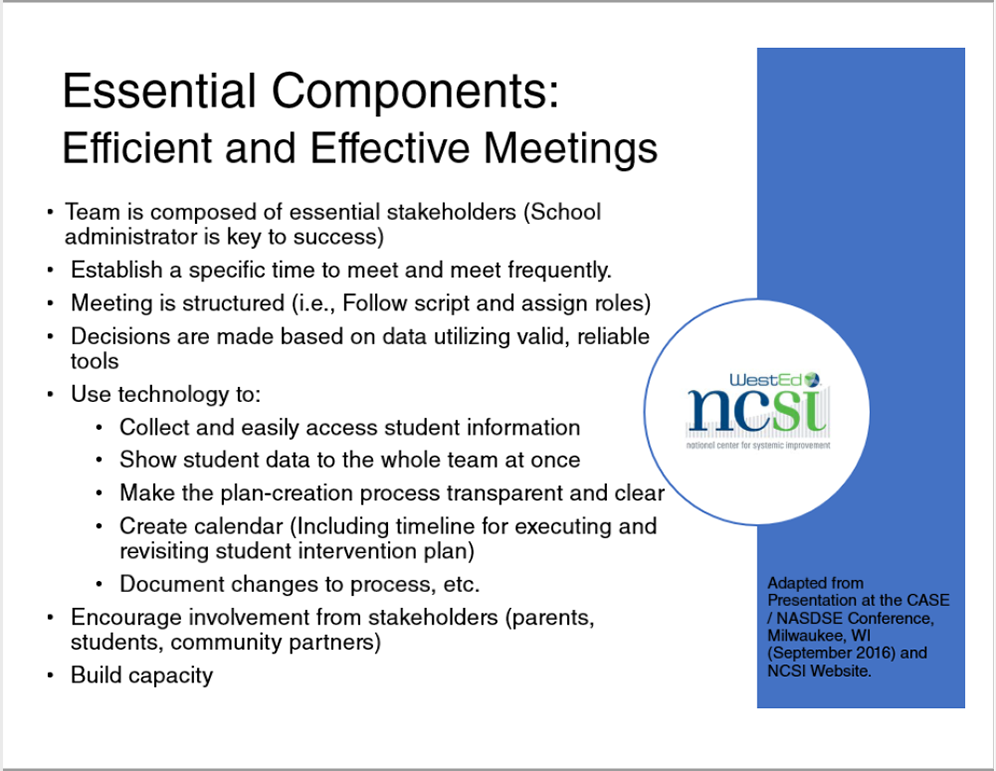
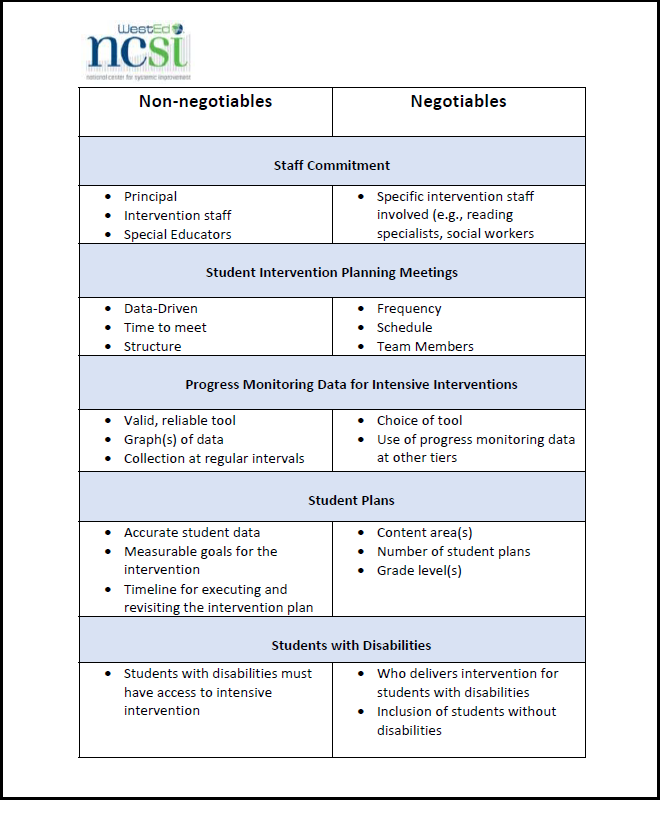
Student Success District Meeting
Student Success School Team
Agenda Example Meeting Agenda Example
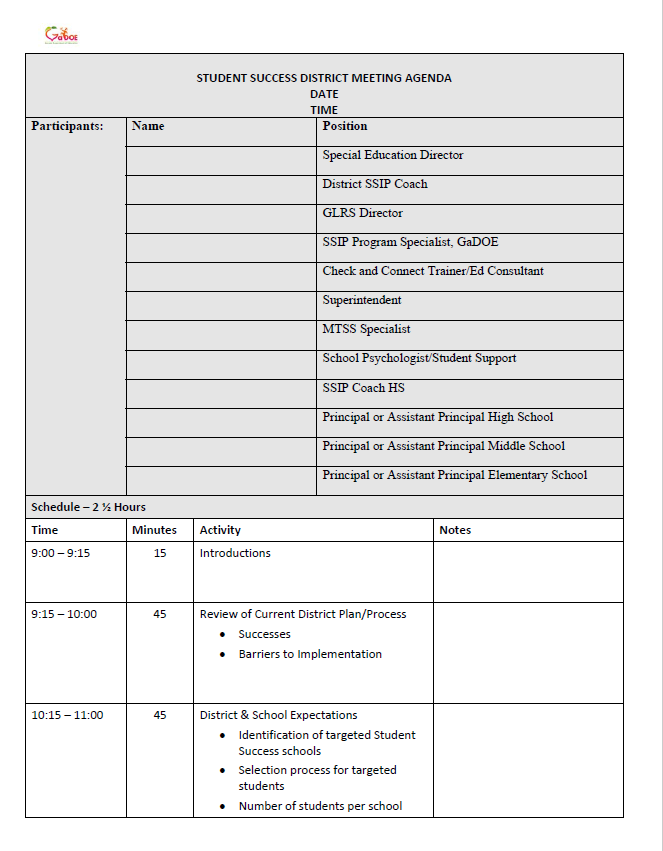
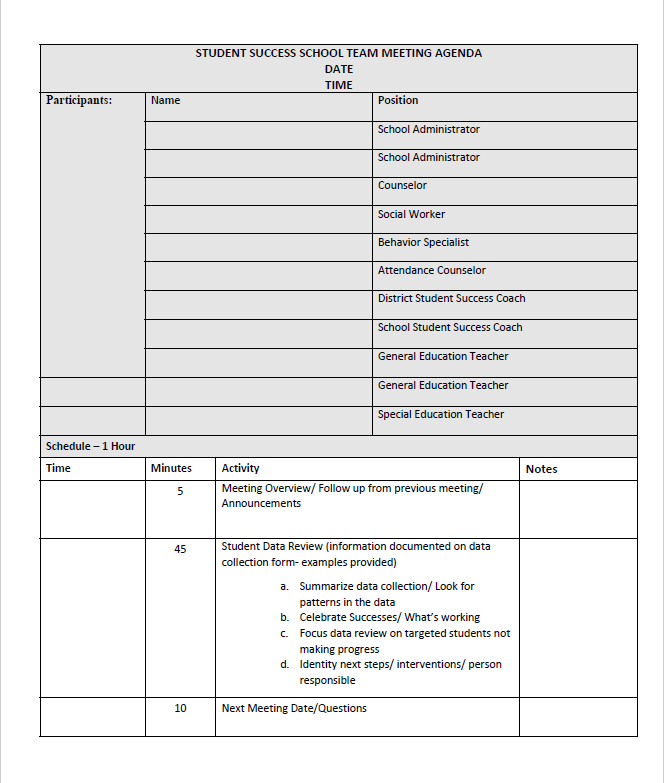
A Step-by-Step Guide Strategies,
Tools and Resources Leading Effective Stakeholder
Teams in the Work to Increase Student Graduation Rates and Career Readiness
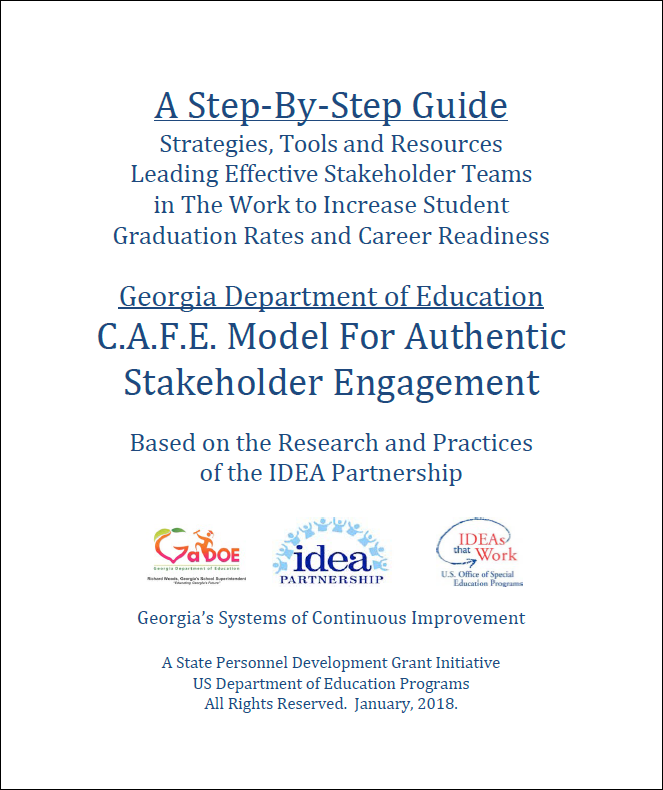
Authentic Stakeholder Engagement Online Training - Georgia Parent Mentor Partnership

A thorough data analysis of all relevant data must be examined to understand the most pressing needs of students, schools, and educators, as well as to determine the root causes of each of the needs relevant to student engagement, achievement, and behavioral/social emotional concerns.
Comprehensive Needs Assessment - Georgia Department of Education, School Improvement, Federal Programs, LEA Consolidated Application
IDEA Data Center (IDC) Guidance on Indicator 1 and 2 Changes 2021
LEA Data Processes Toolkit | IDC - IDEA Data Center (IDC)
Using Student Achievement Data to Support Instructional Decision Making
Submit a Request for Data from GaDOE
GOSA Schools Like Mine - Tools to Compare Schools with Similar Demographics
Graduation Rate (Indicator 1) and Dropout Rate (Indicator 2) Calculator | IDC - IDEA Data Center (2021)
IDEA FY23 Guiding Questions for CLIP Links to Publicly Reported Data
Development
Performance Dashboards for Education
Identify students at-risk through an early warning system (EWS) . The need for Early Warning Systems grew from the evidence that student disengagement from school is a gradual process and students demonstrate particular indicators that they are on the path to dropping out. As a result, data can be used to identify trends among students, allowing educators to intervene early in a student’s life, thereby preventing them from leaving the education system without graduating.

American Institute for Research (AIR): Can Early Warning Systems prevent Students from Dropping out of High School?
Step 1: Establishing Roles and Responsibilities
Step 2: Using the Early Warning Data Tool
Step 3: Reviewing Early Warning Data
Step 4: Interpreting Early Warning Data
Step 5: Assigning and Providing Interventions
Step 6: Monitoring Interventions and Student Progress
Step 7: Evaluating and Refining the EWIMS Process
A Practitioner's Guide to Implementing Early Warning Systems Summary Series
Early Warning Systems
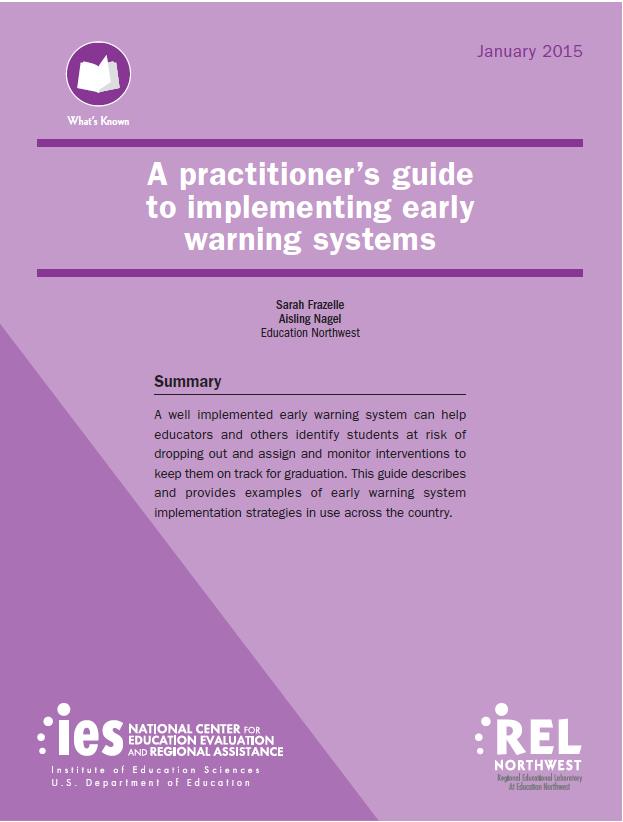
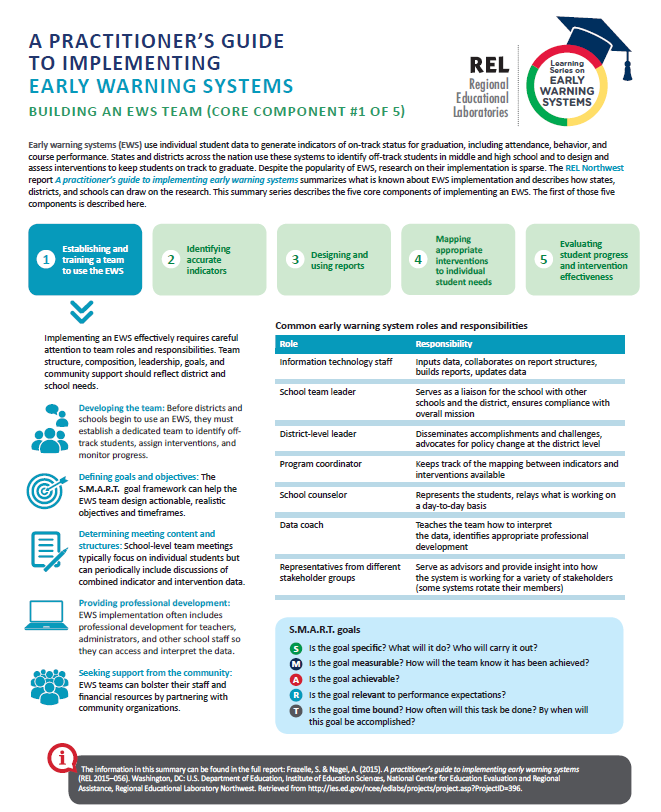
Early Warning Data System - Texas Comprehensive Center at American
Institute of Research (AIR) Free Resource - Registration Required
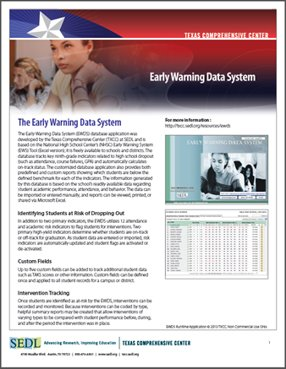
Early Warning System Thresholds Early Warning System: Screening Time Frame


Early Warning System Fidelity Checklist
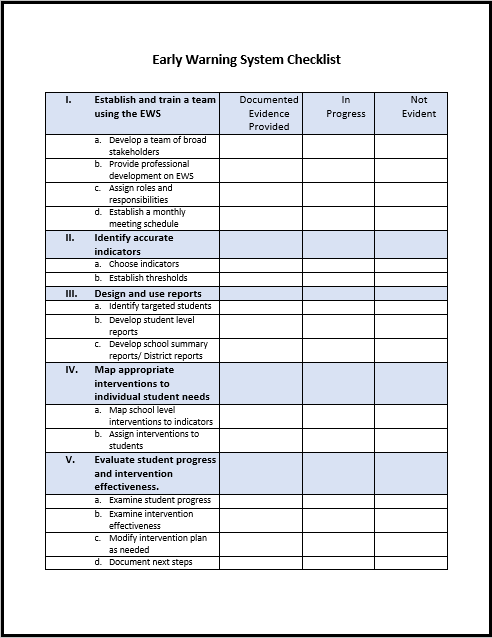
Districts Discuss the Benefits of Implementing an Early Warning System (Video)
Data Visualizations for Early Warning Systems (Video)

Decatur County Individual Student ABC Monitoring Form 
Disclaimer: We have taken all reasonable care to ensure that the information contained within these pages is accurate and up to date. We do not endorse any non-Georgia Department of Education websites or products contained within these pages or through external hyperlinks. These webpages and documents provide only a sampling of available resources and in no way should be considered an exhaustive list of available resources. It is at the discretion of individual districts and schools to determine appropriate resources to serve stakeholders. Email katherine.johnson@doe.k12.ga.us to recommend additional resources.

